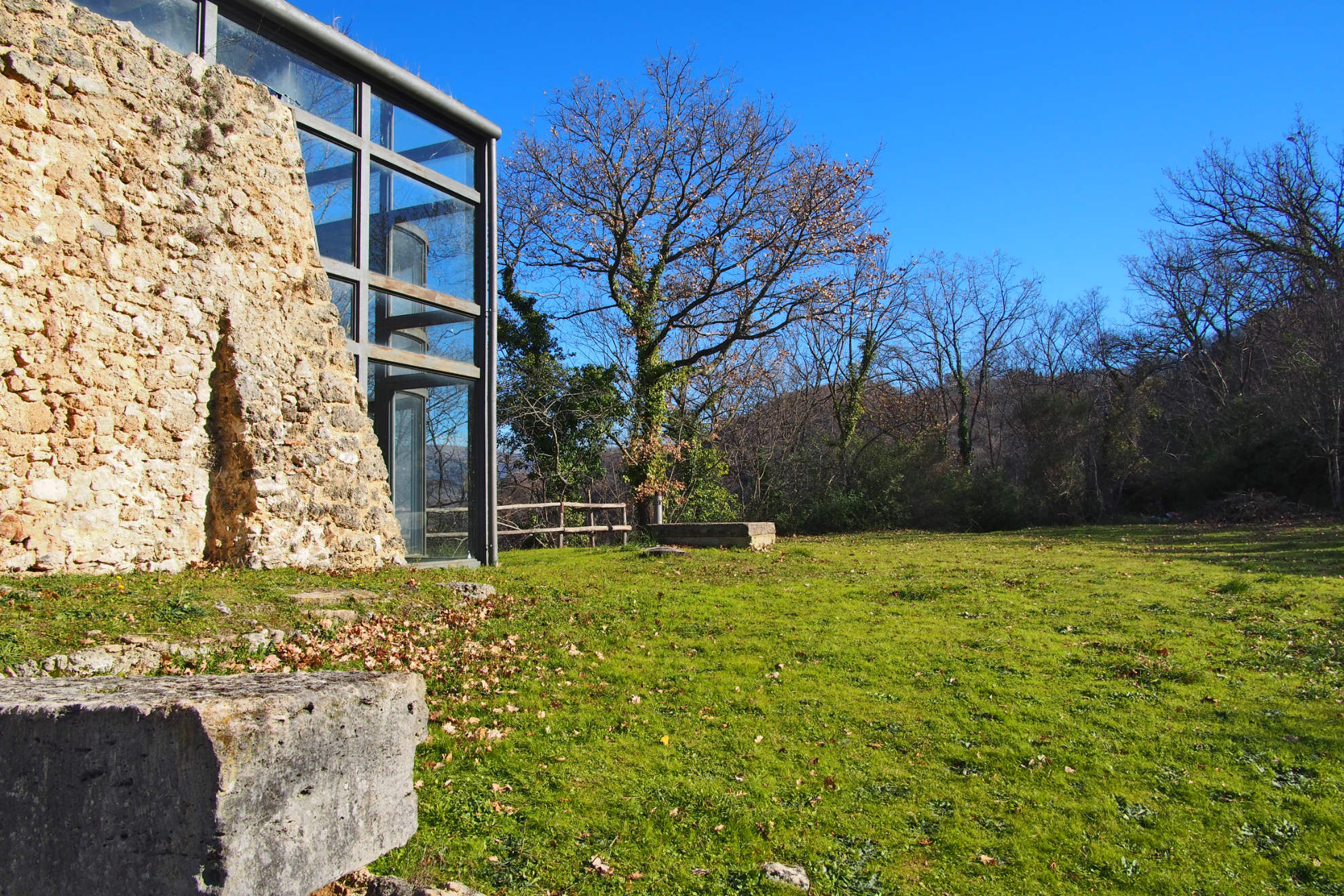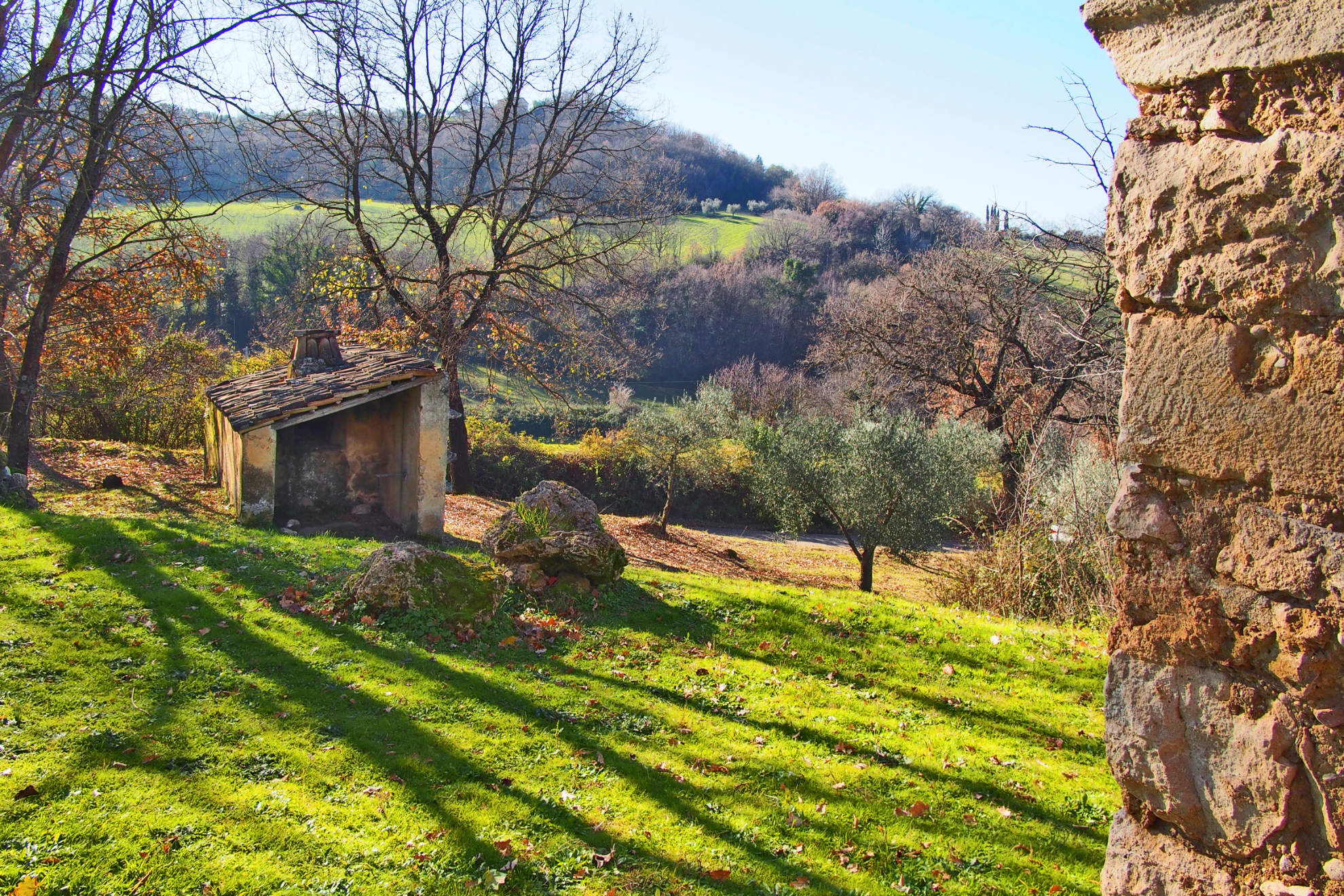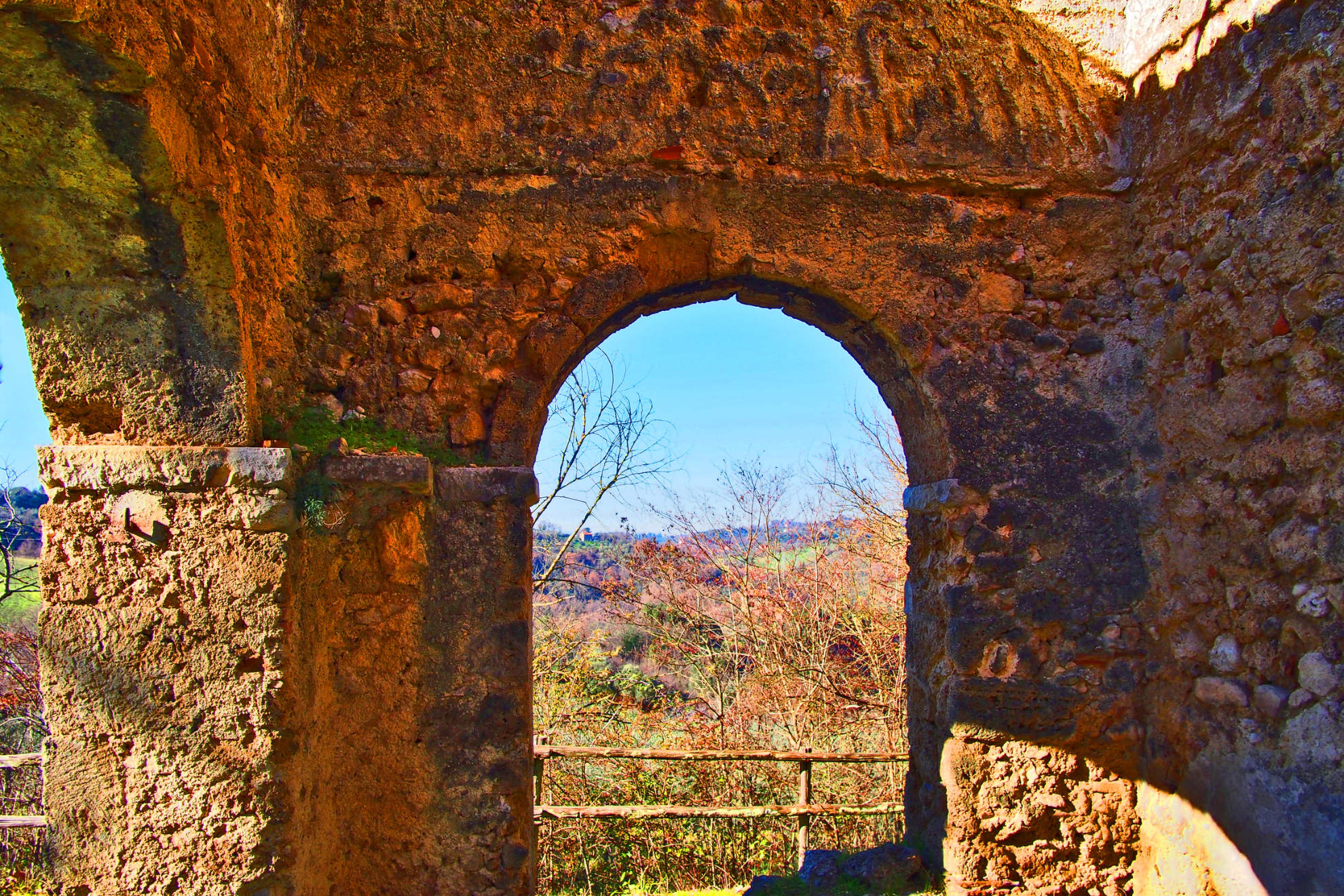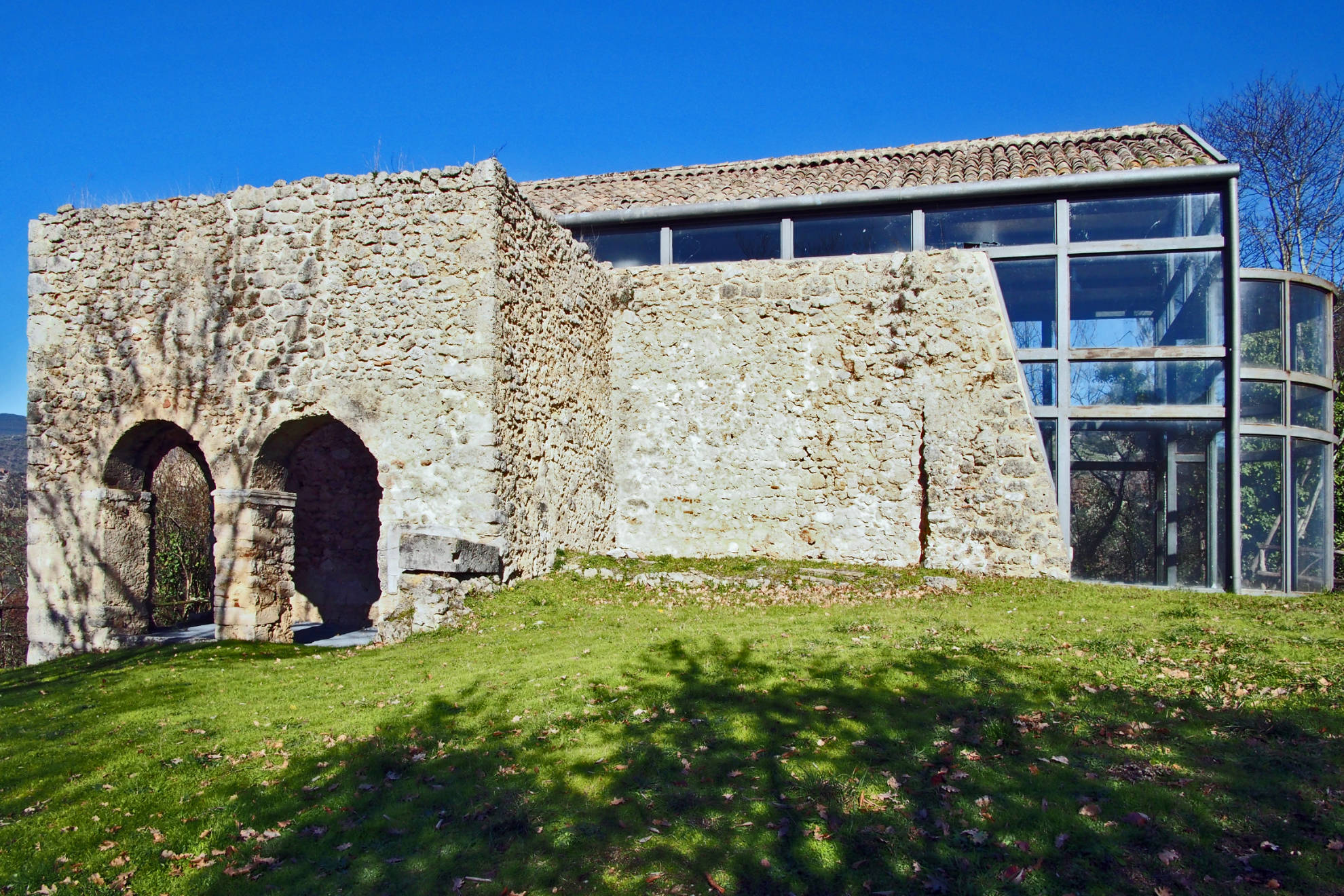Nestling in countryside infused with the fragrance of olive oil and moss, the rock church of San Donato is a must-see. To find it, follow the path from Castelnuovo di Farfa as it winds through meadows and fields of grazing sheep.
Ph. Roberta Venditti

Continue along the footpath lined with bushes and red-orange spindle plants poking out amid the greenery, until after a short climb you will see the church on your right. There are hardly any signposts to one of the oldest churches not only in the Sabine hills, but in all of Europe. The story of this centuries-old gem is documented in the Abbey of Farfa, a twenty-minute car journey from San Donato.
Ph. Roberta Venditti

The first mention of the building dates back to 768, when San Donato was an ordinary farmhouse known as “Il Ciciliano”. It was donated with the consent of the Duke of Spoleto, Theodicius, to the very powerful Abbey of Farfa. At that time it was not a religious building. According to the historical reconstruction, the first news of the church dates back to 817, when documents show that Casale Ciciliano also contained a church, called San Donato.
Ph. Roberta Venditti

In 1046 San Donato became a castrum: a hamlet that was inhabited until the 13th century and the formation, just uphill of the church, of what is now Castelnuovo di Farfa, which attracted a large part of the population of San Donato.
In the 1990s the church was the subject of an archaeological dig, led by the University of Sheffield (England), precisely because it is considered one of the very rare examples of the transition from the Roman agricultural age and the medieval period.
Ph. Roberta Venditti

After years of neglect and dereliction, during which time the building was also used as a farmhouse, San Donato has now been restored thanks to the municipalities of the Farfa Valley. Its original volume and shape have been maintained, and today it is used as part of the Sabina olive oil museum.
The church is also a destination for curious hikers looking for something a little more challenging than the easy path to the Farfa river and the medieval bridge, and venture further afield in search of San Donato, the perfect symbol of the history of this region.

